Como As Pessoas A Nossa Volta Nos Marcam. Interessante O Uso De Cores, Uma Vez Que A Energia Que Nos
Como as pessoas a nossa volta nos marcam. Interessante o uso de cores, uma vez que a energia que nos envolve tem amplitudes diferentes, portanto podemos representá-la pelo expectro de cores.
More Posts from Ritasakano and Others



![Cassini: Photos Of Saturn’s Ocean Moon Enceladus, November 26th 2017: [1] [2] [3] [4] [5] [6] [7] [8]](https://64.media.tumblr.com/d9028e2e0d6a044bf7f46486fdbc2594/tumblr_ohedi4ED2U1r4o9aco1_500.jpg)
![Cassini: Photos Of Saturn’s Ocean Moon Enceladus, November 26th 2017: [1] [2] [3] [4] [5] [6] [7] [8]](https://64.media.tumblr.com/efc6e64bcc45405d8a78249cfbf2fbc6/tumblr_ohedi4ED2U1r4o9aco2_500.jpg)
![Cassini: Photos Of Saturn’s Ocean Moon Enceladus, November 26th 2017: [1] [2] [3] [4] [5] [6] [7] [8]](https://64.media.tumblr.com/c1d38d55509e4e92f02a0ce301fec091/tumblr_ohedi4ED2U1r4o9aco3_500.jpg)
![Cassini: Photos Of Saturn’s Ocean Moon Enceladus, November 26th 2017: [1] [2] [3] [4] [5] [6] [7] [8]](https://64.media.tumblr.com/d6bb6e2182bdcba5970b3495999bbe22/tumblr_ohedi4ED2U1r4o9aco4_500.jpg)
![Cassini: Photos Of Saturn’s Ocean Moon Enceladus, November 26th 2017: [1] [2] [3] [4] [5] [6] [7] [8]](https://64.media.tumblr.com/1cd24c66229f48f88a0c733c040a5039/tumblr_ohedi4ED2U1r4o9aco5_500.jpg)
![Cassini: Photos Of Saturn’s Ocean Moon Enceladus, November 26th 2017: [1] [2] [3] [4] [5] [6] [7] [8]](https://64.media.tumblr.com/118dfe8fb64f25a325170b6c9827ebad/tumblr_ohedi4ED2U1r4o9aco6_500.jpg)
![Cassini: Photos Of Saturn’s Ocean Moon Enceladus, November 26th 2017: [1] [2] [3] [4] [5] [6] [7] [8]](https://64.media.tumblr.com/e03ced7a9d7d631f52e7eb0666afa985/tumblr_ohedi4ED2U1r4o9aco7_500.jpg)
![Cassini: Photos Of Saturn’s Ocean Moon Enceladus, November 26th 2017: [1] [2] [3] [4] [5] [6] [7] [8]](https://64.media.tumblr.com/fb8ce11c6553c95ee42c031a63fa8644/tumblr_ohedi4ED2U1r4o9aco8_500.jpg)
Cassini: Photos of Saturn’s ocean moon Enceladus, November 26th 2017: [1] [2] [3] [4] [5] [6] [7] [8] Image Credit: NASA/JPL-Caltech/Space Science Institute
Organização, respeito ao cidadão.
Politeness in Japan puts the World to shame.
É Natal
Vamos cantar
Alegria
Em nossos
Corações!!!





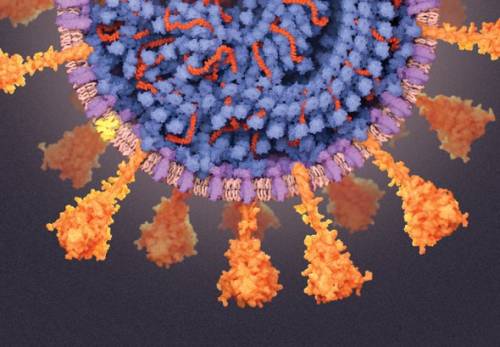
A Visual Guide to the SARS-CoV-2 Coronavirus
Illustrations by Veronica Falconieri Hays (Scientific American)
What scientists know about the inner workings of the pathogen that has infected the world
For all the mysteries that remain about the novel coronavirus and the COVID-19 disease it causes, scientists have generated an incredible amount of fine-grained knowledge in a surprisingly short time.
Thousands of different coronaviruses may inhabit the planet. Four of them are responsible for many of our common colds. Two others have already triggered alarming outbreaks of disease: in 2002 a coronavirus caused severe acute respiratory syndrome (SARS), which killed more than 770 people worldwide, and in 2012 a different strain started Middle East respiratory syndrome (MERS), taking more than 800 lives. SARS burned out within a year; MERS still lingers.
The newest coronavirus, SARS-CoV-2, has created a far deadlier pandemic in part because once it infects a person it can lie undetected for a long time. An individual who had the SARS coronavirus did not transmit it until 24 to 36 hours after displaying symptoms such as fever and dry cough; people feeling ill could be isolated before they made others sick. But people with COVID-19 can transmit the virus before they show clear symptoms. Not feeling ill, infected men and women work, commute, shop, eat out and attend parties, all the while exhaling coronavirus into the airspace of people around them. The virus can remain undetected inside the human body for so long partly because its genome produces proteins that delay our immune system from sounding an alarm. Meanwhile lung cells die as the virus secretly reproduces. When the immune system does hear the call, it can go into overdrive, suffocating the very cells it is trying to save.
In the graphics that follow, Scientific American presents detailed explanations, current as of mid-June, into how SARS-CoV-2 sneaks inside human cells, makes copies of itself and bursts out to infiltrate many more cells, widening infection. It shows how the immune system would normally attempt to neutralize virus particles and how CoV-2 can block that effort. It explain some of the virus’s surprising abilities, such as its capacity to proofread new virus copies as they are being made to prevent mutations that could destroy them. And it shows how drugs and vaccines might still be able to overcome the intruders.

Virus invasion and immune response
A SARS-CoV-2 particle enters a person’s nose or mouth and floats in the airway until it brushes against a lung cell that has an ACE2 receptor on the surface. The virus binds to that cell, slips inside and uses the cell’s machinery to help make copies of itself. They break out, leaving the cell for dead, and penetrate other cells. Infected cells send out alarms to the immune system to try to neutralize or destroy the pathogens, but the viruses can prevent or intercept the signals, buying time to replicate widely before a person shows symptoms.





Drug and vaccine intervention
Commercial and university labs are investigating well over 100 drugs to fight COVID-19, the disease the SARS-CoV-2 virus causes. Most drugs would not destroy the virus directly but would interfere with it enough to allow the body’s immune system to clear the infection. Antiviral drugs generally stop a virus from attaching to a lung cell, prevent a virus from reproducing if it does invade a cell, or dampen an overreaction by the immune system, which can cause severe symptoms in infected people. Vaccines prepare the immune system to quickly and effectively fight a future infection.


The remarkable and mysterious Coronavirus genome
The SARS-CoV-2 genome is a strand of RNA that is about 29,900 bases long—near the limit for RNA viruses. Influenza has about 13,500 bases, and the rhinoviruses that cause common colds have about 8,000. (A base is a pair of compounds that are the building blocks of RNA and DNA.) Because the genome is so large, many mutations could occur during replication that would cripple the virus, but SARS-CoV-2 can proofread and correct copies. This quality control is common in human cells and in DNA viruses but highly unusual in RNA viruses. The long genome also has accessory genes, not fully understood, some of which may help it fend off our immune system.

This article was originally published with the title “Inside the Coronavirus” in Scientific American 323, 1, 32-37 (July 2020). doi:10.1038/scientificamerican0720-32
Source: By Mark Fischetti, Veronica Falconieri Hays, Britt Glaunsinger, Jen Christiansen | Scientific American July 2020 Issue

Como a linha que percorre a trama do tecido vejo-me envolvida pelos sentimentos diversos que ora aquece os ossos, ora os faz ficar doloridos.




The benefits of a bilingual brain
It’s obvious that knowing more than one language can make certain things easier — like traveling or watching movies without subtitles. But there are other advantages to having a bilingual brain. While bilingualism won’t necessarily make you smarter, it does make your brain more healthy, complex and actively engaged. So even if you didn’t have the good fortune of learning a second language as a child, it’s never too late to make a linguistic leap! After all, a little brain exercise can go a long way.
What does it really mean to know a language? Language ability is typically measured in two active parts (speaking and writing), and two passive parts (listening and reading). While a balanced bilingual has near equal abilities across the board in two languages, most bilinguals around the world know and use their languages in varying proportions. And depending on their situation and how they acquired each language, they can be classified into three general types.
A compound bilingual develops two linguistic codes simultaneously, with a single set of concepts. If you learned two languages from the time you were very young, chances are you are a compound bilingual. A coordinate bilingual works with two sets of concepts, for example, someone who speaks one language at home and another in school or with friends. Finally, a subordinate bilingual is someone who learns a secondary language by filtering it through their primary language.
Did you know a multilingual brain actually has more grey matter than a monolingual brain?
Source: TED-ED
Educator: Mia Nacamulli Animator: Lisa LaBracio
👏
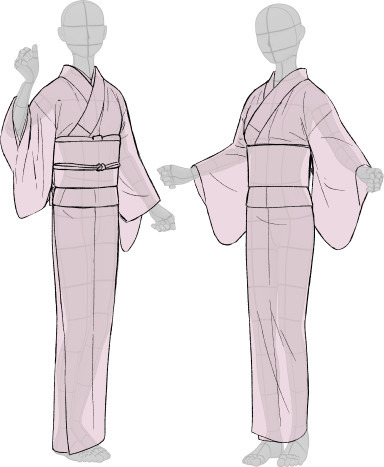
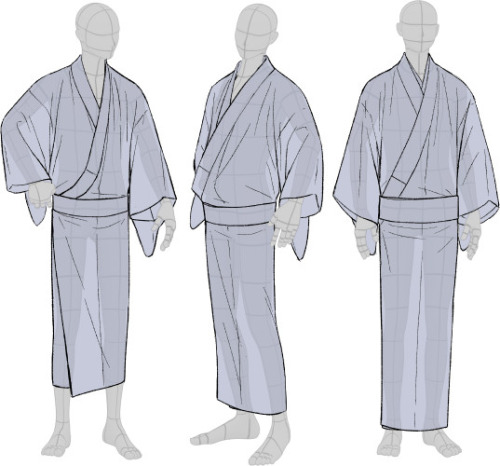
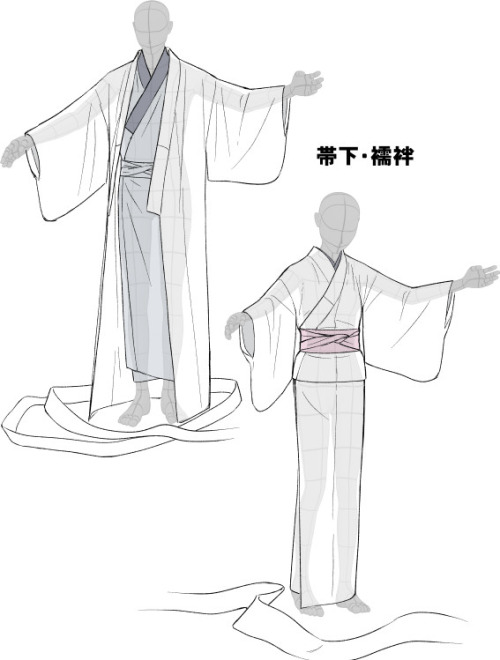
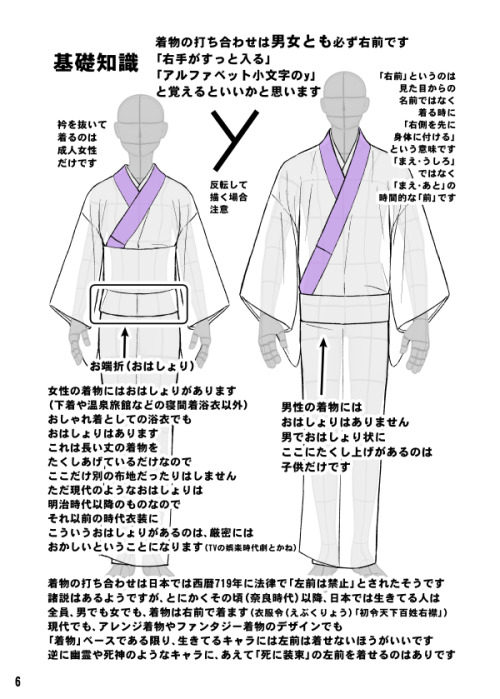
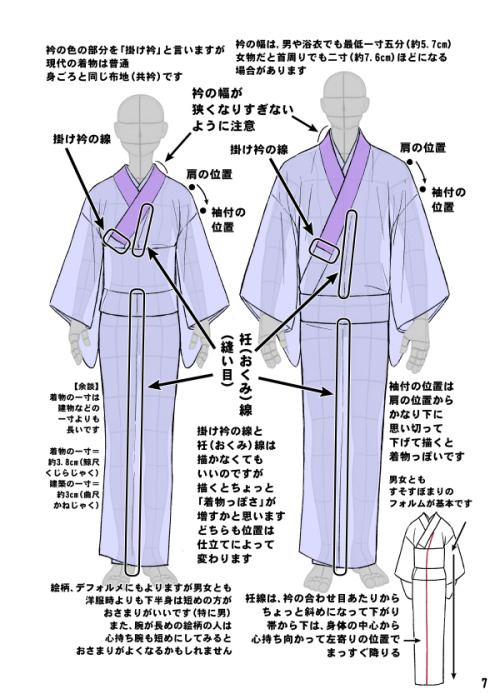
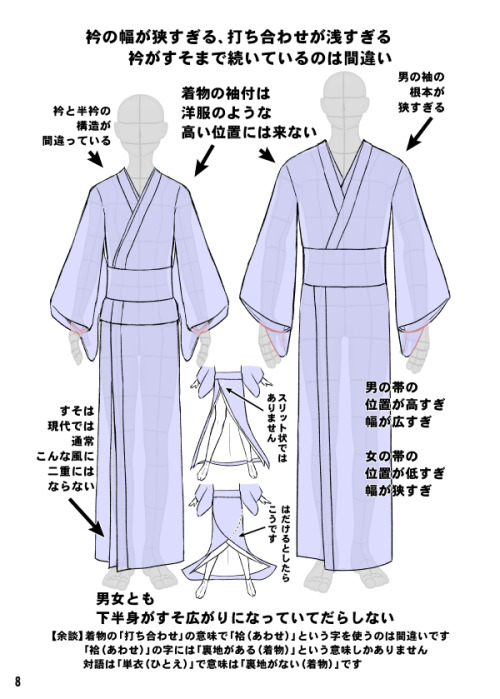
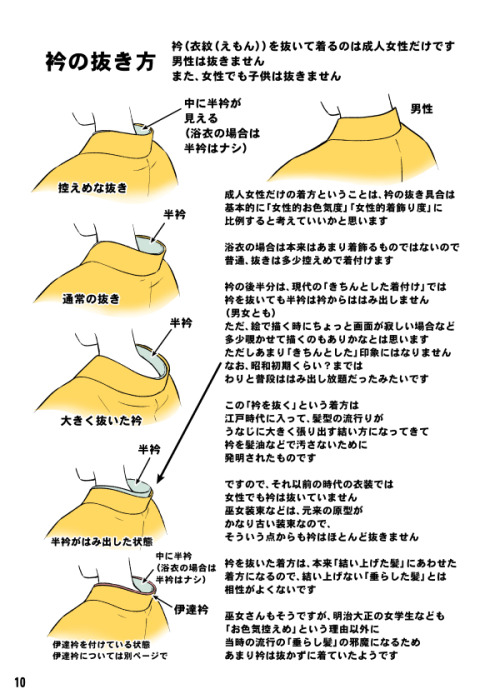

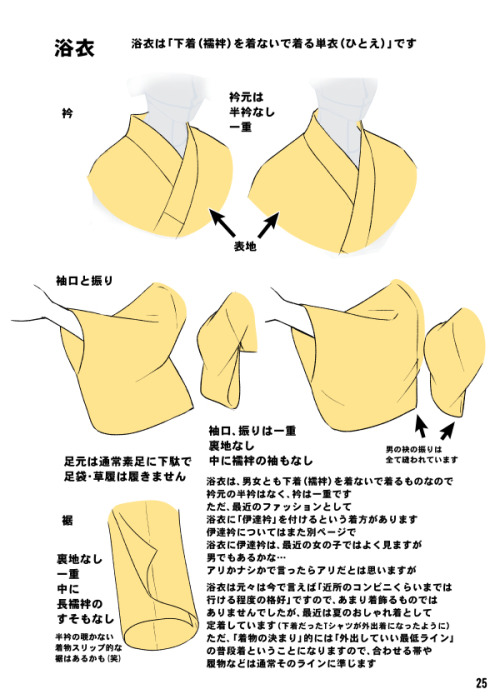
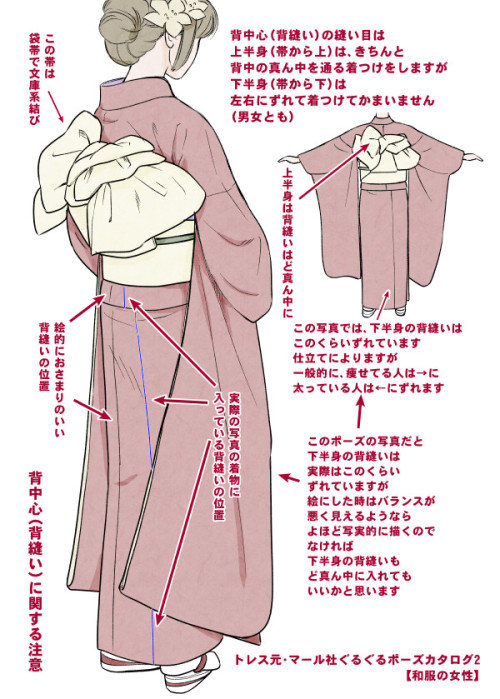
Kimono drawing guide ½, by Kaoruko Maya (tumblr, pixiv, site). Booklet is available in pdf for ¥ 900 here.
Here you can see:
female kimono and yukata (note how the juban underwear peeks when in kimono + how belts differ)
male yukata and kimono (note how the juban underwear peeks when in kimono)
dressing up: male (kimono is not closed yet) and female (kimono closed with datejime belt and ready to put on obi)
differences between female and male kimono once dressed (note how the collars and belts set)
common drawing mistakes (compare with previous picture: shoulders lines are too defined, there is a double hem, collars are narrow, belt is not at the right place etc)
women back collar (the lower the sexier) and men back collar (close to the nape)
back and sleeves differences between men and women
collars and sleeves and view of how kimono drapes around body
Furisode back (long sleeves kimono) and formal furisode obi knot example

